Discover the diverse world of yarn needles as we dive into their various types, materials, and uses to enhance your knitting and crochet projects.
Are you a crochet or knitting enthusiast looking to up your game? One essential tool that can make all the difference in your projects is the yarn needle. Yarn needles come in various shapes, sizes, and materials, each with its unique purpose and benefits.
In this article, we’ll explore some of the most common types of yarn needles and their uses. Whether you’re a beginner or an experienced crafter, understanding these tools’ differences can help take your creations to the next level.
So let’s dive into the world of yarn needles!
Single Pointed Needles
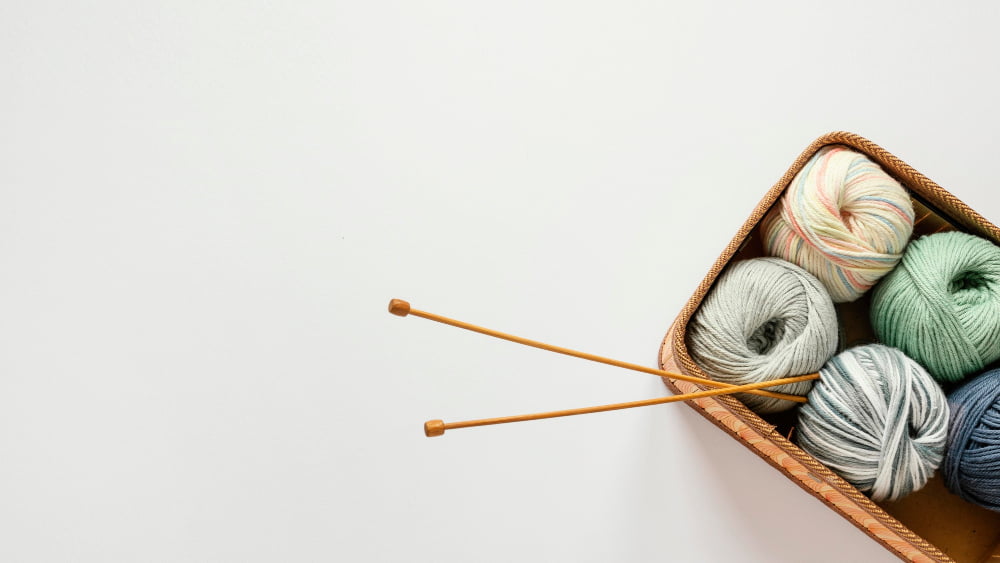
Single Pointed Needles are the most common type of knitting needles and a great starting point for beginners. They come in pairs, with one pointed end and one stopper end to prevent stitches from slipping off.
Single-pointed needles are perfect for flat projects like scarves, blankets, or dishcloths that require straight edges.
These needles come in various lengths ranging from 9 inches to 14 inches long. The length you choose depends on your project’s size; shorter ones work well for smaller items while longer ones can accommodate larger pieces.
Single-pointed needles also vary in material – wood, bamboo or metal – each offering its unique benefits such as durability or flexibility. Wooden single-pointed knitting needles provide warmth and comfort when working with them while metal options offer more strength and durability.
Circular Knitting Needles
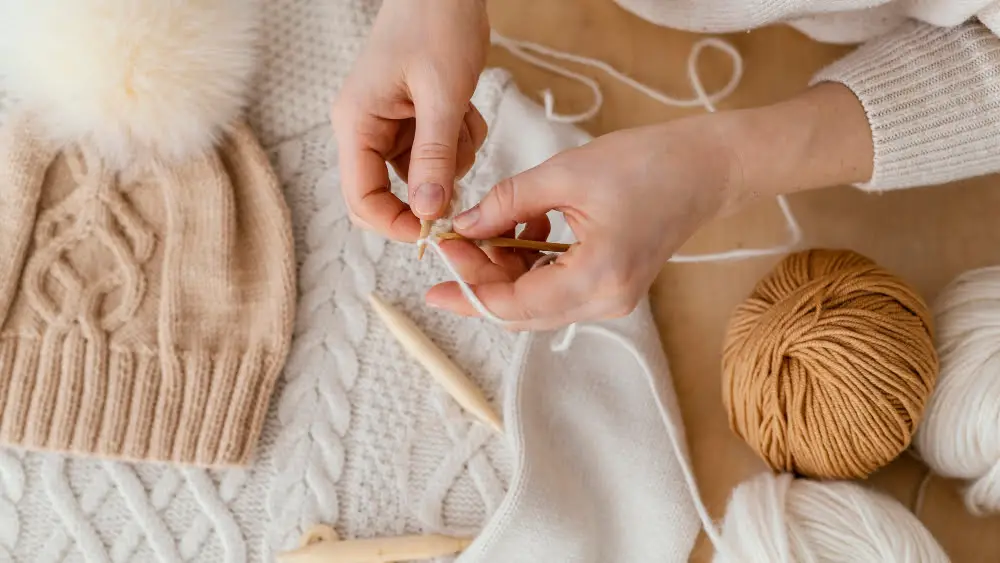
They consist of two needle tips connected by a flexible cable, allowing you to knit in the round or work on flat projects with ease. The length and thickness of the cable can vary depending on your project’s size, making them suitable for everything from hats and socks to sweaters and blankets.
One significant advantage of circular needles is that they distribute the weight evenly across the entire project, reducing strain on your hands, wrists, and arms during long knitting sessions. Because you don’t need to turn your work at each row’s end as with straight needles’ traditional method – it makes circulars ideal for larger pieces like shawls or afghans.
When choosing circular knitting needles consider factors such as material (wooden vs metal), cord flexibility (rigid vs soft), tip shape (pointed vs blunt) based upon personal preference.
Double-Ended Needles
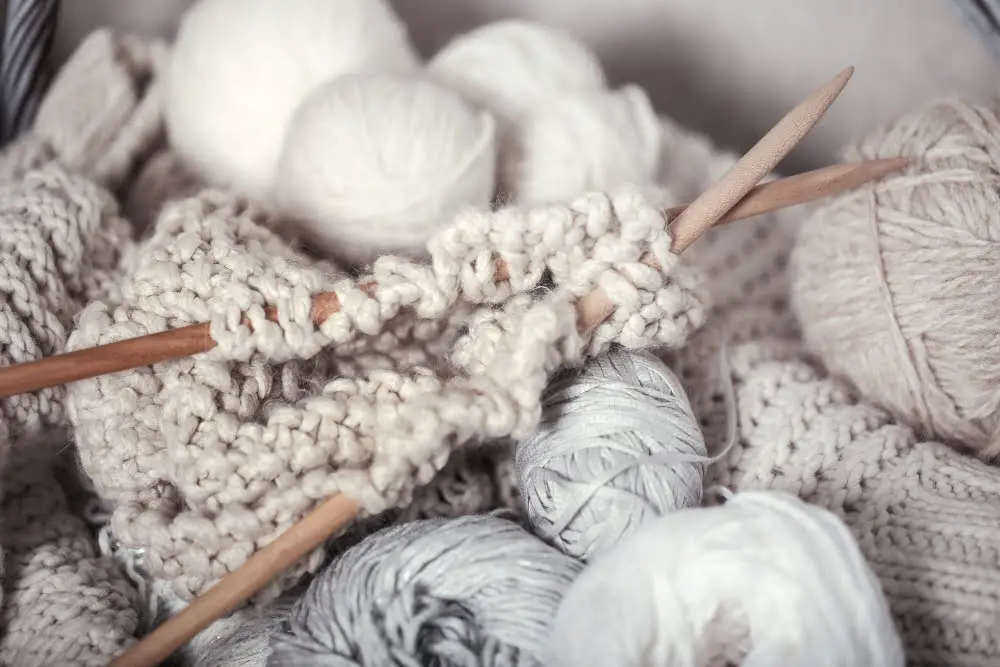
These needles come in sets of four or five and have points on both ends, allowing you to knit from either side. Double-ended needles are perfect for creating seamless items such as hats, mittens, socks and sleeves.
One advantage of using DPNs is that they allow you to work with a smaller number of stitches at once than circular knitting needles do. This makes them ideal for working on small circumference projects like gloves or socks where it would be difficult to use circulars.
Another benefit is that they can help distribute the weight evenly across your project so that there isn’t too much strain on any one needle point. This feature helps prevent laddering between stitches when working with multiple DPNs.
Cable Stitch Needles
These needles have a unique shape, with two pointed ends connected by a flexible cable in the middle. The cable allows you to hold stitches while you work on other parts of your project, making it easier to create complex designs.
Cable stitch needles come in different sizes and lengths, depending on the size and complexity of your project. They can be made from various materials such as bamboo or metal, each offering its own benefits.
When using these types of needles for cabling techniques like twisting or crossing stitches over one another, it’s essential to choose the right size needle for your yarn weight and gauge. Using too small or too large cables can result in uneven tension and affect the overall look of your finished piece.
Interchangeable Knitting Needles

These needles consist of two parts: the needle tips and the cables that connect them. The tips can be easily removed from one cable size to another, allowing you to switch between different needle sizes without having to buy new sets every time.
One advantage of interchangeable knitting needles is that they take up less space than traditional fixed circular or straight needles since you only need one set of tips for all your projects. They also allow for more flexibility in terms of length, as you can adjust the cable length according to your project’s needs.
When choosing interchangeable knitting needles, consider factors such as material (wooden or metal), tip shape (pointed or blunt), and cable length options. Some brands even offer additional accessories like stitch markers and carrying cases.
Tapestry Weaving Needles

These blunt-tipped needles come in various sizes and materials such as plastic or metal. They are perfect for sewing in loose ends of yarn or joining pieces together seamlessly.
Tapestry weaving is a technique used to create intricate designs on fabric by interweaving different colored threads. The tapestry needle’s large eye makes it easy to thread the thicker woolen yarns commonly used in this type of craft.
In addition to their primary use, tapestry needles can also be handy when working with other types of knitting and crochet projects that require seaming or finishing touches.
Knook Needles
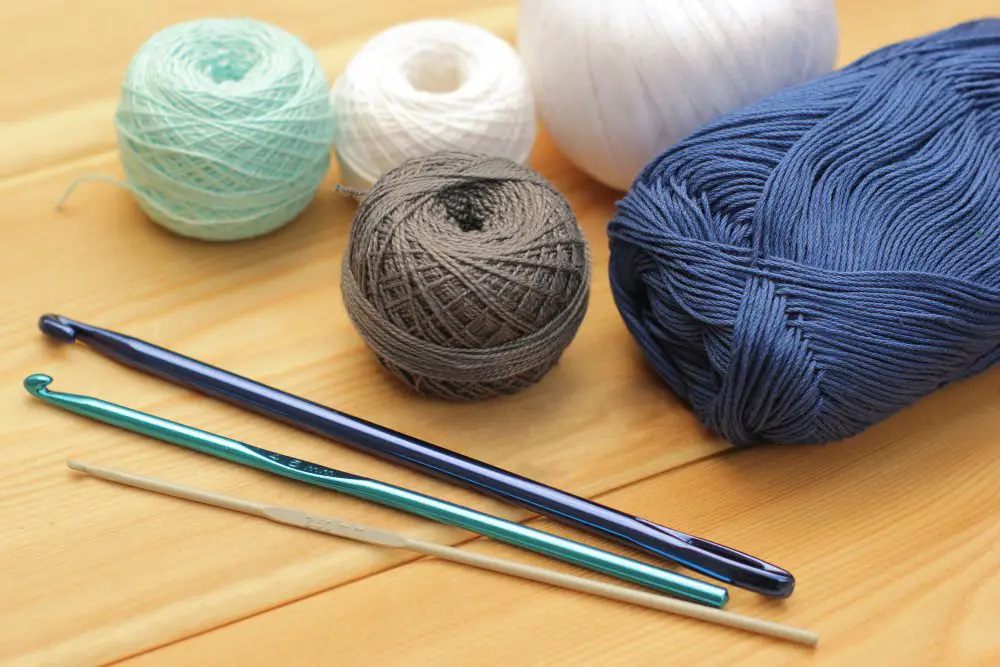
These unique tools are a cross between knitting needles and crochet hooks, allowing you to create knit-like fabric with the ease of crocheting.
Knooks come in various sizes and materials, including bamboo, aluminum, or plastic. They have a hook on one end like traditional crochet hooks but also feature an eye at the other end where you can thread your yarn through.
Using knooks is relatively easy once you get used to them; they work similarly to regular crochet hooks but allow for more versatility in stitch patterns and designs. You can use them for creating everything from blankets and scarves to hats and sweaters.
Loom Knitting Tools

Looms come in various shapes and sizes, from round looms for hats and socks to long rectangular ones for scarves and blankets. The great thing about using a loom is that it’s easy to learn, making it an excellent option for beginners or those with limited dexterity.
To get started with loom knitting, you’ll need some essential tools such as the actual loom itself, yarn needle (for weaving in ends), stitch markers (to keep track of your stitches), scissors (for cutting yarn), crochet hook (for fixing mistakes or picking up dropped stitches) among others.
When choosing your first set of tools, consider investing in high-quality materials that will last longer than cheaper alternatives. You can find many different types of looming kits online or at craft stores depending on what type of project you want to make.
Tunisian Crochet Hooks Sizes
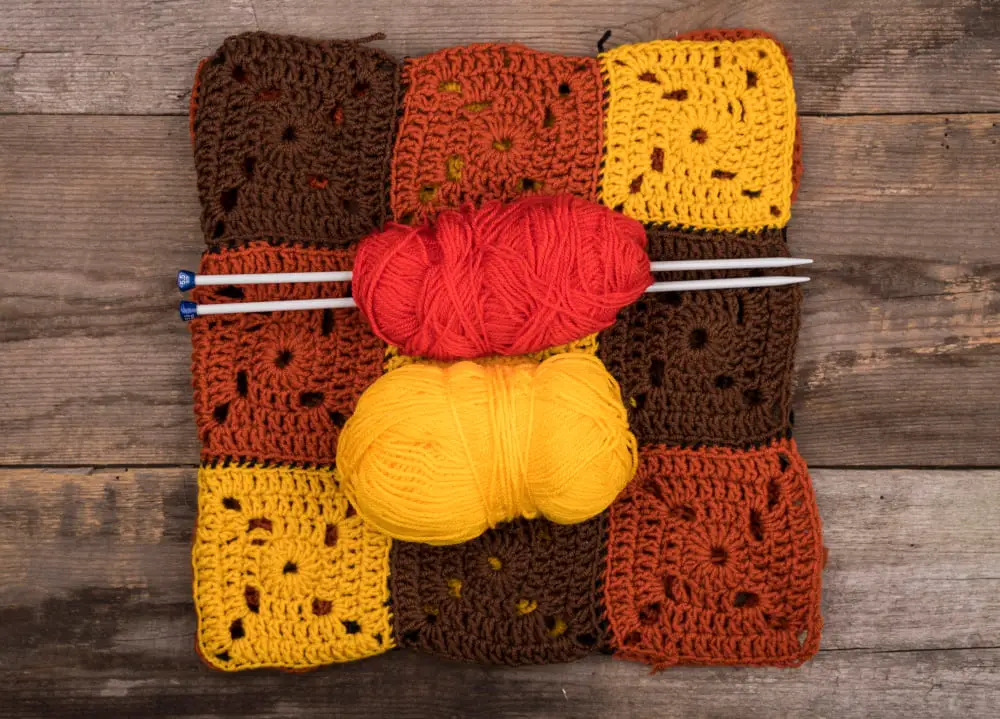
It uses a long hook with an extended shaft, similar to a knitting needle, to create beautiful textured fabrics. Tunisian crochet hooks come in various sizes, ranging from 2mm to 15mm or more.
The size of the hook you choose depends on your project’s requirements and the yarn weight you’re using.
The most common Tunisian crochet hook sizes are between 4mm-6mm (US G/6-J/10). These hooks work well for medium-weight yarns like worsted or aran weight.
If you’re working with bulky or super bulky yarns, consider using larger-sized hooks like K/10½ (6.5 mm) up to M/N-13 (9 mm).
It’s essential to match your Tunisian crochet hook size with your chosen yarn weight for optimal results in terms of stitch definition and fabric drape.
Afghan Crochet Hooks
They are designed to accommodate multiple loops and stitches, making them ideal for creating large projects such as blankets, shawls, and afghans. Afghan hooks come in various sizes ranging from 8mm to 20mm in diameter.
These types of hooks have a unique shape with an elongated shaft that allows you to work on many stitches at once without worrying about them falling off the hook. The length also makes it easier for you to hold more yarn while working on your project.
If you’re new to using Afghan crochet hooks or want some tips on how best to use them, there are plenty of resources available online or through local crafting groups.
Standard Crochet Hook Sizes

The standard crochet hook sizes range from 2mm to 19mm, with the smaller hooks used for delicate projects like lacework or amigurumi toys and the larger ones ideal for bulky yarns. When choosing a crochet hook size, it’s essential to consider your project’s weight and thickness of yarn.
The most commonly used crochet hook sizes are G/4 mm (medium weight), H/5 mm (bulky weight), I/5.5 mm (heavy worsted weight), J/6 mm (super bulky/chunky) K /6.5mm( super chunky/bulky). However, there are many other available options that can be useful depending on your project needs.
It’s worth noting that different countries may have their own sizing standards; therefore, it is crucial to check the manufacturer’s specifications before purchasing any new tools.
Combined and Sorted List
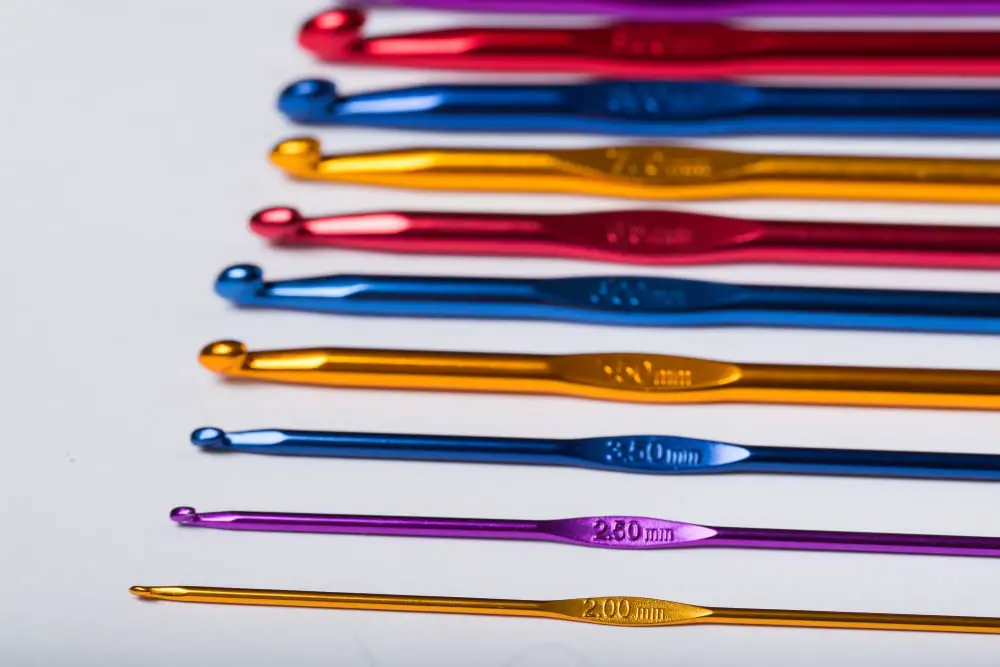
This will help you quickly identify which needle is best suited for your project needs.
First on our list are straight or single-pointed needles, which are perfect for flat knitting projects like scarves and blankets. Circular knitting needles come in second place and can be used to knit both flat and round projects such as hats, socks, sweaters, etc.
Double-pointed (double-ended) needles take third place on our list; they’re ideal for small circular knits like gloves or sleeves. Cable stitch needles come fourth; they’re designed to hold stitches while creating intricate cable patterns.
Interchangeable knitting tools rank fifth on the list because of their versatility – these sets allow you to switch out needle sizes without having to buy new ones every time! Tapestry weaving (or darning) comes sixth – these blunt-tipped tools make it easy to weave in loose ends or sew pieces together seamlessly.
Knooking/knook crochet hooks take seventh place with their unique design that combines elements of both crochet hooks and knitting needles. Looms follow closely behind at eighth position since they offer an alternative way of creating knit-like fabrics using pegs instead of traditional stitching methods.
Finally Tunisian/Afghan crochet hooks complete our top nine positions with their elongated shafts allowing more loops per row than standard crocheting techniques do.
Straight (Single Pointed) Needles

They come in pairs and have a pointed end on one side and a knob or stopper on the other to prevent stitches from slipping off.
These needles are perfect for flat projects like scarves, blankets, and dishcloths that require back-and-forth stitching. They’re available in various lengths ranging from 9 inches to 14 inches long with different diameters depending on your project’s thickness.
The material used for straight needles can vary widely; some popular options include bamboo, wood or metal materials such as aluminum or nickel-plated brass. Each material has its unique benefits: bamboo is lightweight and flexible while wooden ones offer warmth but may be heavier than their metal counterparts.
Circular Knitting Needles
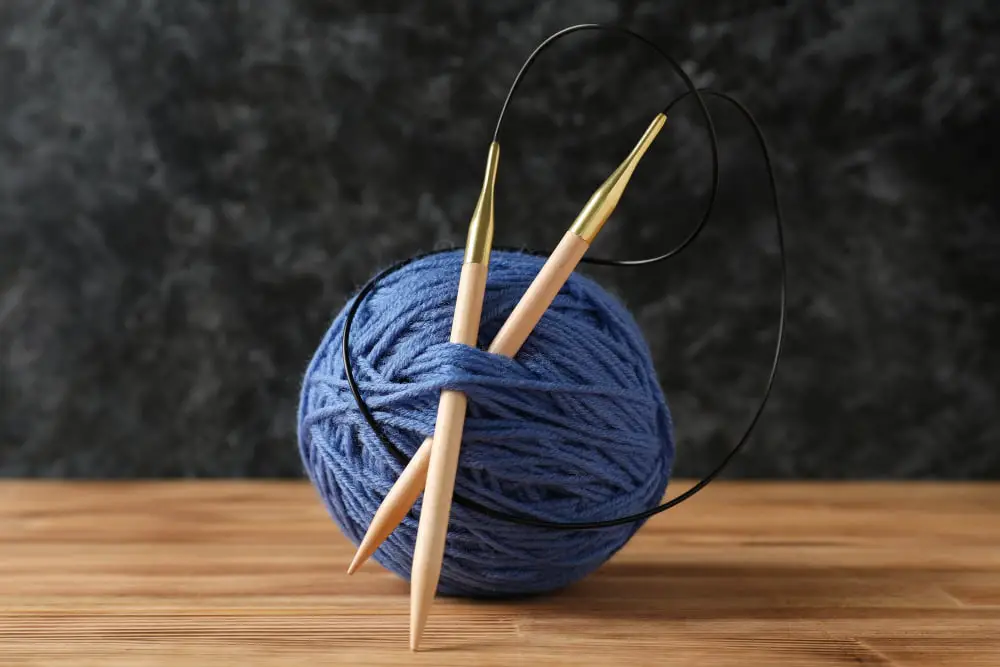
They consist of two needle tips connected by a flexible cable that allows you to knit in the round or flat. Circular needles come in various lengths, materials, and sizes to suit different projects’ needs.
The most common length is 16 inches (40 cm), which is ideal for hats, sleeves, and small circumference items. Longer cables such as 24-32 inches (60-80 cm) are suitable for larger projects like sweaters or blankets.
Circular knitting needles can be made from different materials such as bamboo wood or metal alloys like nickel-plated brass. The material affects the needle’s weight and flexibility; some knitters prefer lightweight bamboo while others opt for sturdy metal options.
When choosing circular knitting needles size matters too! You’ll need to match your yarn weight with the appropriate needle size indicated on your pattern instructions.
Double Pointed (Double-Ended) Needles

These needles come in sets of four or five and have pointed tips on both ends. They allow you to knit in the round without any seams or joins.
One advantage of double-ended needles is that they provide more flexibility than other types of knitting needles. You can use them to create intricate patterns with ease since you don’t need to worry about changing your needle’s position when working on different sections.
Another benefit is that these needles are incredibly versatile; they come in various sizes ranging from 1mm up to 10mm diameter depending on the project’s requirements.
When using double-pointed needles for your projects, it’s essential first to cast-on stitches onto one needle before dividing them evenly among all the others. This technique ensures an even distribution of stitches across each needle so that you can work seamlessly around your project without any ladders forming between each section.
Double Pointed (Double-Ended) Needles offer many benefits over other types of knitting tools when working with small circular items like socks and hats.
Cable Stitch Needles
These needles come in various sizes and shapes, but they all have one thing in common: a curved or bent shape that allows you to hold stitches out of the way while you work on other parts of your pattern.
Cable stitch needles can be made from different materials such as plastic, metal, bamboo or wood. Some knitters prefer using wooden cable stitch holders because they don’t slip out easily and provide better grip than their metal counterparts.
When working with cables, it’s essential to use the right size needle for your yarn weight so that the stitches slide smoothly along without getting too tight or loose. You’ll also want to make sure you’re using a sturdy enough material for your project since cables can put extra strain on both yarn and tools.
Interchangeable Knitting Needles
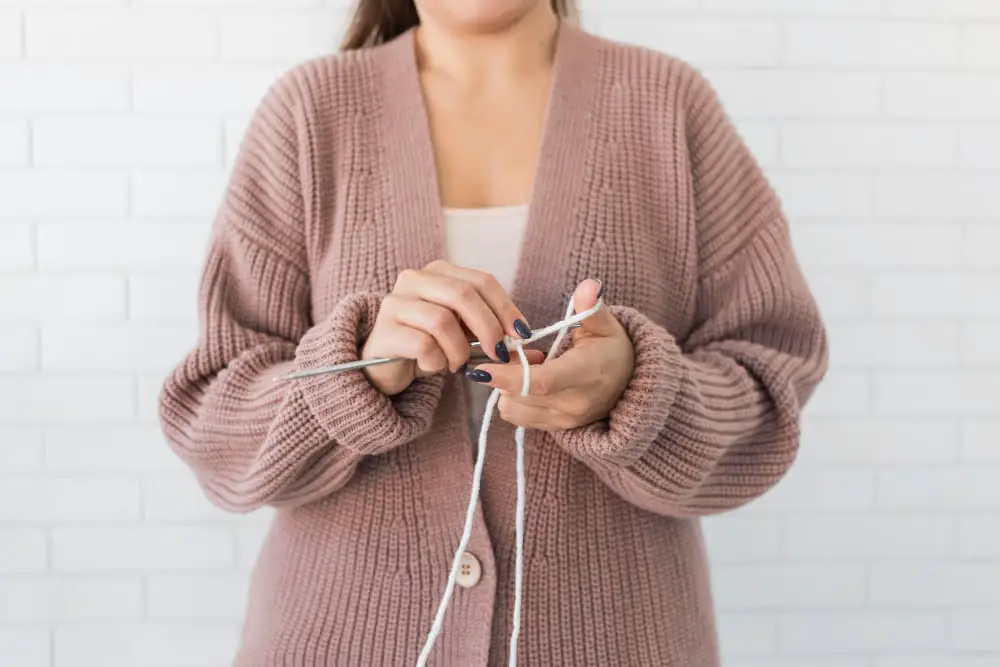
These sets typically come with multiple needle tips that can be easily attached to different lengths of cables, allowing you to customize the size and length of your needles as needed.
One significant advantage of interchangeable knitting needles is their space-saving design. Instead of having a separate set for each size, you can store all your tips in one compact case, making them ideal for travel or small crafting spaces.
Another benefit is the cost-effectiveness over time. While they may seem more expensive upfront than traditional fixed circulars or straight needles, investing in an interchangeable set means you won’t have to keep buying new sets every time you need a different size.
When choosing an interchangeable set, consider factors such as material (wooden vs metal), cable flexibility and durability (some brands offer memory-free cables), tip length options (shorter tips work well for smaller projects while longer ones are better suited for larger items) and ease-of-use when switching out the tips.
Tapestry Needles (Weaving Needles)
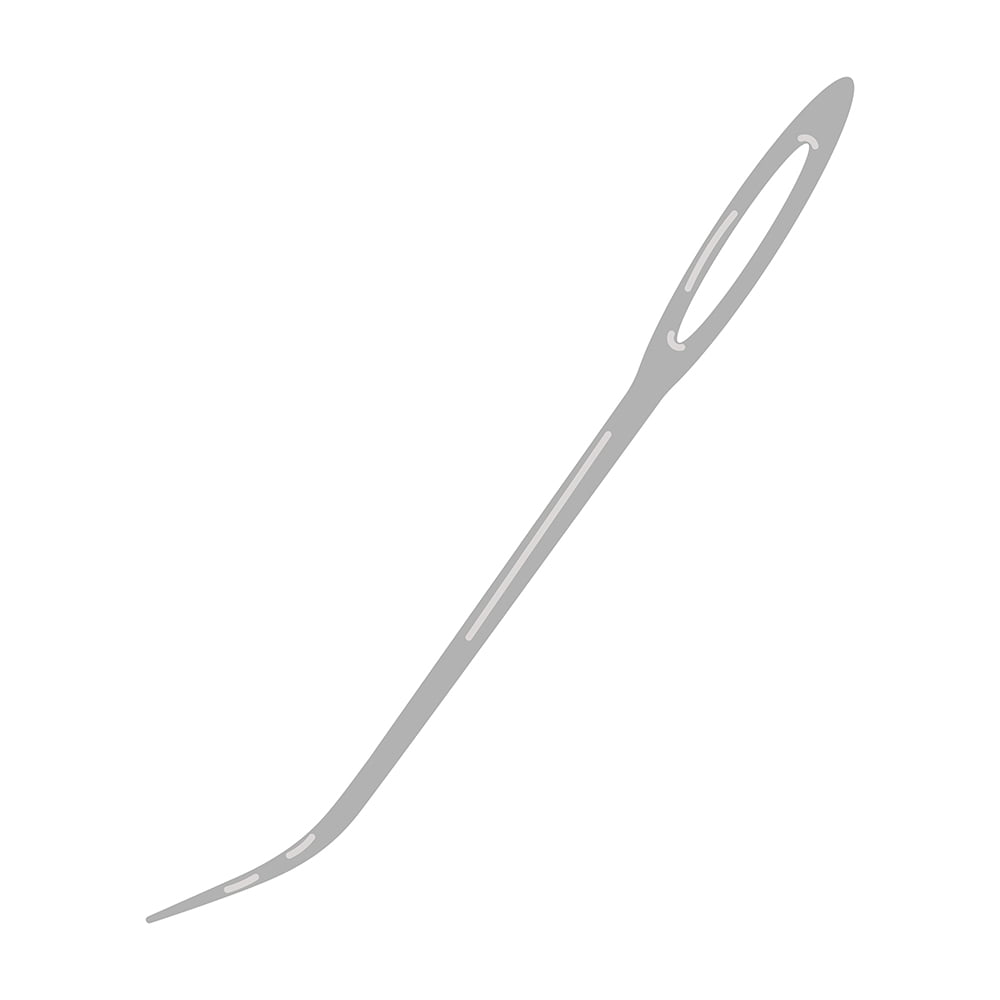
These needles are blunt-tipped and come in various sizes, making them perfect for working with different yarn weights. They also have large eyes that can accommodate thicker yarns.
Tapestry needles are versatile tools that can be used for more than just weaving and tapestries. You can use them to sew seams together or weave in ends on your knitting projects.
When choosing a tapestry needle, consider the size of the eye and the length of the needle itself. A longer needle may be more comfortable to hold but might not fit through smaller spaces as easily as shorter ones.
Knooking (Knook) Needles

It involves using a specialized tool called the knook needle, which looks like a cross between a crochet hook and knitting needle. The Knook allows you to create knit-like fabric with ease while still maintaining some of the benefits of crocheting.
The Knooks come in different sizes depending on your project’s needs and are available in both straight or circular forms. They have an eye at one end where you thread your yarn through before starting to work on your stitches.
One advantage of using Knooks is that they allow for more versatility than traditional needles since they can be used for both knit and purl stitches without having to switch tools constantly. It’s easier to keep track of where you are in your pattern since each stitch stays securely on the cord until worked again.
Loom Knitting Tools
Looms come in various shapes and sizes, from small round looms to large rectangular ones. They are perfect for beginners or those who struggle with traditional knitting techniques.
To get started with loom knitting, you’ll need some essential tools. The first thing you’ll need is a loom itself; there are many types of looms available on the market today, so it’s important to choose one that suits your needs.
In addition to the actual loom, other necessary tools include a hook tool (used for pulling loops over each other), stitch markers (to keep track of where you are in your pattern), scissors (for cutting yarn), and tapestry needles (for weaving in ends).
Some optional but helpful accessories include row counters (to help keep track of rows) and pom-pom makers(for creating cute pom-poms).
Tunisian/Afghan Crochet Hooks
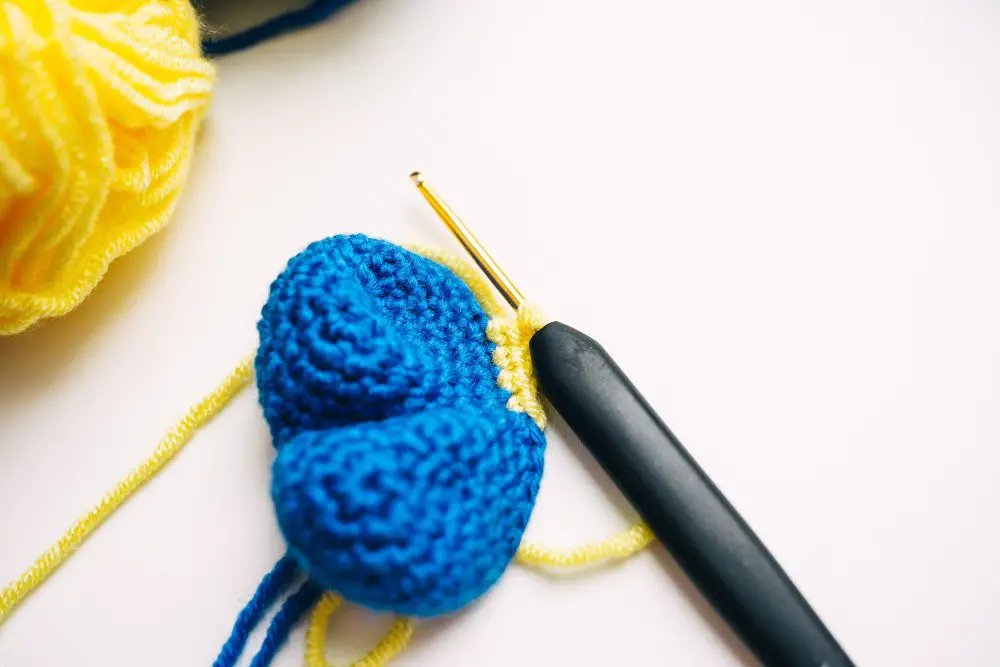
It uses a special type of hook called Tunisian or Afghan hooks. These hooks are longer than standard crochet hooks and have a stopper at one end to prevent stitches from falling off.
Tunisian/Afghan Crochet Hooks come in various sizes ranging from 2mm to 15mm in diameter. The size you choose depends on the yarn weight you’re using and your desired stitch size.
The most common types of Tunisian/Afghan Crochet Hooks are straight (single-ended) or double-ended with different lengths depending on your project’s width. They can be made out of aluminum, plastic, bamboo or wood materials.
Using these specialized tools allows for creating beautiful textured fabrics with intricate patterns that cannot be achieved through traditional crocheting techniques alone. Whether you’re making blankets, scarves or even garments like sweaters and cardigans – Tunisian/Afghan Crochet Hooks will help take your projects to new heights!
Crochet Hook Sizes (Standard and Tunisian Hooks)
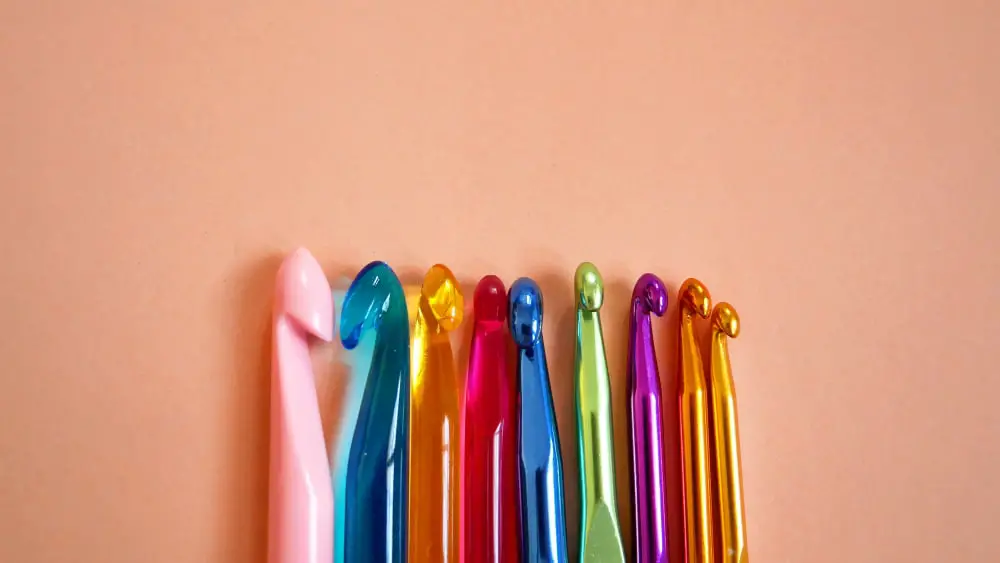
The size of the crochet hook determines the finished project’s gauge or tension, so it’s crucial to choose the right one for your project.
Standard crochet hooks come in lettered sizes from B (2.25mm) to S (19mm), with each size corresponding to a specific diameter. Smaller hooks are suitable for fine yarns like lace weight or fingering weight, while larger ones work best with bulky or super bulky yarns.
Tunisian crochet is a unique technique that combines elements of both knitting and crocheting using an elongated hook called an Afghan/Tunisian hook. Tunisian crochet requires longer needles than standard ones because you need enough space on them to hold all your stitches at once.
Afghan/Tunisian Crochet Hooks have lettered sizes similar but not identical as those used by standard Crochet Hooks; however, they also include millimeter measurements since this type of needle is often used internationally where metric sizing is more common than imperial/lettering systems.
FAQ
Which needle for yarn?
For yarn, use needles between 1.5-2.5mm for lace weight, 3-5.5mm for worsted/middle-weight, and 5-8mm and larger for chunky yarns.
What are the 2 types of knitting needle?
There are 2 types of knitting needles which are straight needles and circular needles, as they are used for working in rows and both rows and rounds respectively, while double point needles, which work in rounds, are considered a subcategory of them.
What are the different types of circular needles?
The different types of circular needles are double pointed needles, fixed circulars, and interchangeables.
What are the key factors to consider when choosing a yarn needle?
The key factors to consider when choosing a yarn needle include the type of yarn being used, the project’s requirements, and the needle’s material, size, and shape.
How do knitting needle materials affect yarn work and experience?
“Knitting needle materials affect yarn work and experience by influencing stitch consistency, yarn glide, and user comfort.”
What is the difference between fixed and interchangeable circular needles?
Fixed circular needles have a permanent connection between the needle tips and cable, while interchangeable circular needles allow users to switch needle tips and cables by attaching and detaching them.
